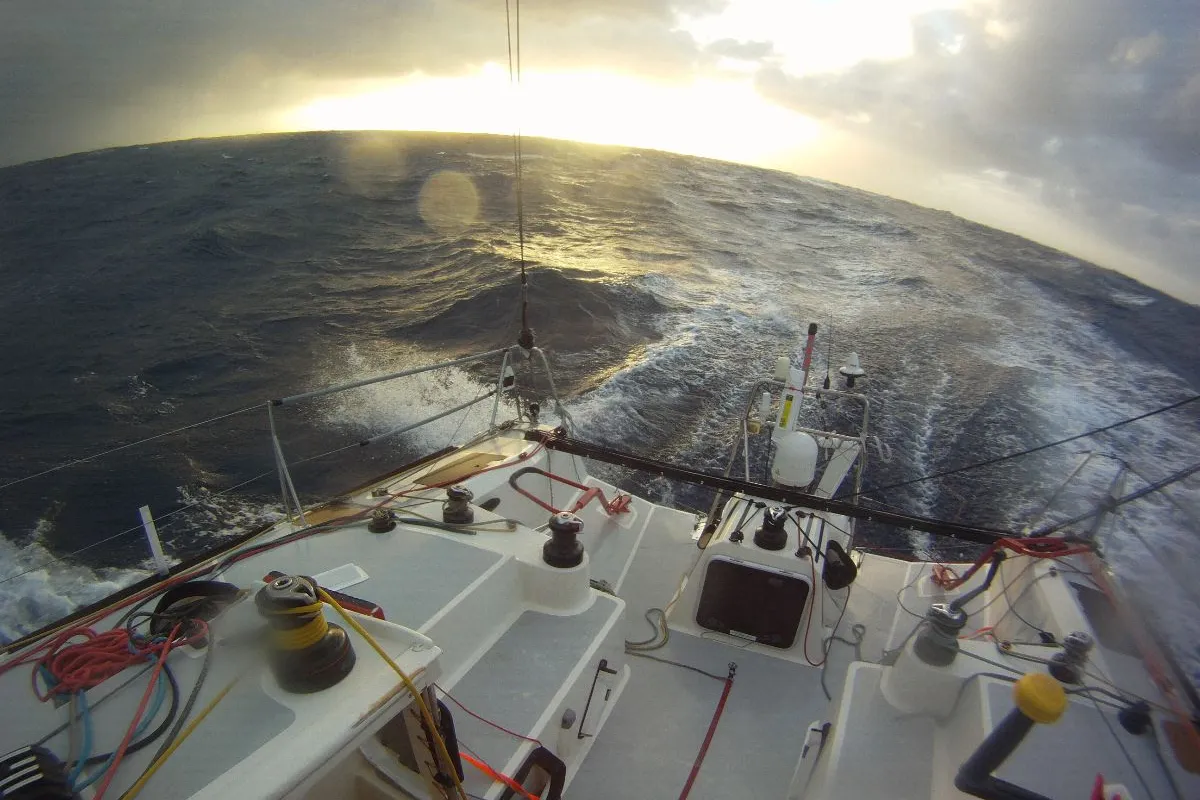The tagline of the Global Solo Challenge, simple and descriptive, comprising just four sentences, captures the attention and interest of seafarers, especially participating skippers, but also those passionate about ocean sailing, who no doubt will follow with enthusiasm the regatta and all skippers involved.
These four sentences immediately, concisely, and clearly explain what this event is all about.
Each one explains an aspect of the adventure.
The first explains “who”. SINGLE-HANDED.
The second gives “the reason”. AROUND THE WORLD.
The third says “how”. NON-STOP.
And the fourth indicates “which way”. BY THE THREE GREAT CAPES.
Each one represents huge challenges that all participants will be facing during the months they’ll spend at sea.
As a matter of fact, they will be facing the first three immediately, right from the starting line. But the one they will be thinking of with deference and, why not, a certain amount of “fear”, is the fourth, “BY THE THREE GREAT CAPES”. It means the longest route – almost half of the event, 10,000 miles!, the hardest in terms of wind, sea, weather conditions… and the most significant.
When they leave behind the Tristan da Cunha Archipelago, sailing close to the 40ºS parallel already aiming East and, initially, with strong winds and the sea pushing them from the West as they focus on reaching the first great Cape, they will have to decide what tactics to apply. With southern Africa on the beam, weather conditions will play an important role when choosing their latitude.
It’s time to round Cape of Good Hope!!! The first of the three great Capes!!
In terms of the currents – they want the south Atlantic current – and winds – they seek those from the West – the natural thing would be to round Cape of Good Hope (18º30’ E) at a latitude close to 40º S, with the Cape 300 miles north and on the port side.
Getting any closer to the southernmost point of the African continent could mean facing prevailing winds and currents in the area of Cape Agulhas and its vast shallow seabed that extends 100 miles from the coast, which in normal conditions is characterised by unfavourable winds and currents.
Augulhas current – Cape of Good Hope – Sea Surface Temperature.
Once they have cleared the 18º30’ E meridian and have reached the southern Indian Ocean, the closest land ahead will be three groups of islands: Prince Edward Islands, 900 miles away; Crozet Islands, 1500 miles away; and the Kerguelen Islands, 2100 miles away. In theory, the first two are in the Antarctic Exclusion Zone, which participants cannot enter. On the other hand, the third group of islands, in principle, is outside the Antarctic Exclusion Zone and, if needed, it’s the closest place to find shelter from the wind on route to Cape Leeuwin from Tristan da Cunha.
The weather tactic at these latitudes (the Roaring Forties) is based mainly on controlling the low-pressure systems that move from West to East, trying to anticipate their trajectories and their latitude. Participants must aim as much as possible to have the wind and sea in favour, choosing the most ESE routes (while keeping out of the Antarctic Exclusion Zone) and the most ENE routes. One way or the other, they must attempt to sail north of the low-pressure systems – which move clockwise in the southern hemisphere – and south of the area of possible high pressure – which blow anticlockwise – and always trying to have West prevailing winds.
In the southern Indian Ocean, between 40ºS and 50ºS, 32% to 52% of winds blow from the West, on average at force 6; 30% to 35% blow from North-West, with the same average intensity; followed, in terms of frequency and intensity, by south-westerly winds, 30% on average at force 5. From the North the conditions are milder, with less intense winds. Other weather conditions, even if included in pilot charts, are less frequent and less intense. These data refer to the month of December. In November, conditions are very similar in terms of percentage, intensity, and direction. In January and February winds are more intense but with the same statistics in terms of direction.
The weather is humid, windy, cold, and overall unpleasant. Life on board is spent mostly inside, limiting trips to the cockpit and on deck to carry out essential activities such as manoeuvring, keeping watch, observing, and other necessities. Characterised by cloudy skies and bad weather, normally associated with low pressure, the singularity of the southern Oceans will no doubt be “THE CHALLENGE” for the participants in the GSC.
BY THE THREE GREAT CAPES!!!
When the participants in the GSC put the first of the great Capes behind them, the meaning of this sentence will just start to make sense. The challenge of the southern Oceans will keep growing as they continue along the 10,000 miles they need to cover before changing route again, once they round the last and most difficult of the three Capes, the mythical Cape Horn, which will open the door to the last stretch up the Atlantic, on their way back to A Coruña.
Click here for the Global Solo Challenge website
Text & Image: Global Solo Challenge
